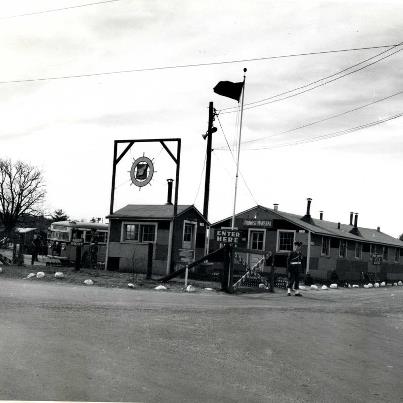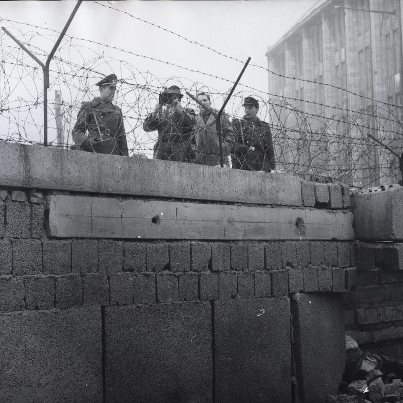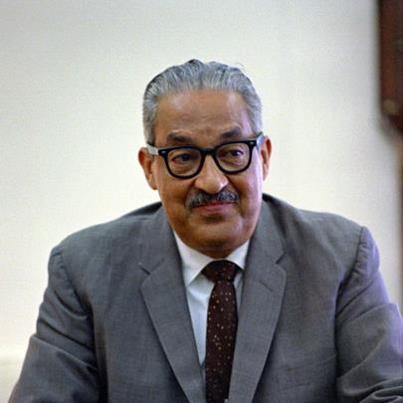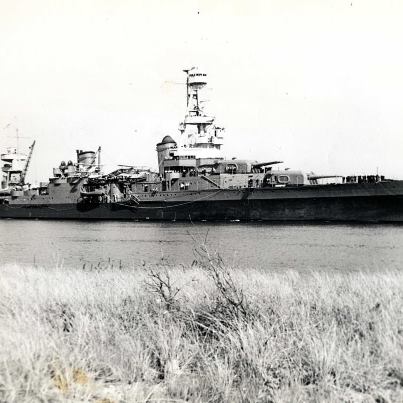- Also On
- During World War II Camp McKay was located on Columbia Point in the Dorchester neighborhood of Boston. The facility was used mostly as a POW camp for Italian prisoners. The prisoners were allowed out on liberty from time to time, and many o...f them went to the North End, where some of them settled after the war. Boston’s North End is where most Italians had settled in Boston and many would bring the prisoners gifts of food and items of clothing that were passed through or over the fence. In 1944, months after Italy had surrendered to the Allies, life improved for Italian prisoners of war detained at Camp McKay, they could not go home because World War II still raged, but the United States stopped treating them as POWs. They moved out of the prison, got jobs at the port, and attended Mass at St. Leonard's Church in the North End. After the war, the barracks were re-used for the Columbia Point Veterans Village. Today, Boston College High School, UMASS Boston and the John F. Kennedy Library sit on or near this former camp. RG 336, Records of the Chief of Transportation, Boston Port of Embarkation, Photos of Boston POE, 1942-1945.See More
- RecommendationsSee All
 Jim BlaineHave used this facility mant times. They are very knowledgeable and helpful.about 7 months ago
Jim BlaineHave used this facility mant times. They are very knowledgeable and helpful.about 7 months ago Ellen HoaglandFinding our Irish roots is the offering Thursday, 1.19.2012 ... Can't wait!!1 · about 9 months ago
Ellen HoaglandFinding our Irish roots is the offering Thursday, 1.19.2012 ... Can't wait!!1 · about 9 months ago Seamus MGreat place to and Great Help when looking for records about your Ancestors.about 9 months ago
Seamus MGreat place to and Great Help when looking for records about your Ancestors.about 9 months ago
- They Came From Italy Thurs. Oct 18, 2012 6 P.M.
Over five million Italians immigrated to the United States in the 19th and 20th centuries, and the greatest volume of immigration from Italy occurred between 1880 and 1920. The influences an...d contributions from that time are still readily apparent in New England. Well-known genealogist Marcia Melnyk, a specialist in Italian family history, will share the secrets of researching Italian family history.See More - LikesSee All
- Connecticut Society of Genealogists, Inc.Non-Profit Organization
- U.S. Army Corps of Engineers, New EnglandProfessional Services · Community & Government
- Affordable AncestrySmall Business
- They Came From Italy Thurs. Oct 18, 2012 6 P.M.
Over five million Italians immigrated to the United States in the 19th and 20th centuries, and the greatest volume of immigration from Italy occurred between 1880 and 1920. The influences an...d contributions from that time are still readily apparent in New England. Well-known genealogist Marcia Melnyk, a specialist in Italian family history, will share the secrets of researching Italian family history.See More National Archives at Boston shared a link.
- At 8:45 AM on October 16, 1962, National Security Advisor McGeorge Bundy alerted President Kennedy that a major international crisis was at hand. Two days earlier a United States military surveillance aircraft had taken hundreds of aerial p...hotographs of Cuba. CIA analysts, working around the clock, had deciphered in the pictures conclusive evidence that a Soviet missile base was under construction near San Cristobal, Cuba, just 90 miles from the coast of Florida. The most dangerous encounter in the Cold War rivalry between the United States and the Soviet Union had begun. This photograph comes from our collegues at the John F. Kennedy Library in Boston and shows President Kennedy meeting with his National Security Council. President John F. Kennedy meets with members of the Executive Committee of the National Security Council (EXCOMM) regarding the crisis in Cuba. (L-R) President Kennedy, Secretary of Defense Robert S. McNamara, and Deputy Secretary of Defense Roswell Gilpatric. Cabinet Room, White House, Washington, D.CSee More
- Plymouth Rock is the traditional site of disembarkation of William Bradford and the Mayflower Pilgrims who founded Plymouth Colony in 1620. There are no contemporaneous references to the Pilgrims' landing on a rock at Plymouth and the first...written reference to the Pilgrims landing on a rock is found 121 years after they landed. In 1920, in preparation for the 300th anniversary of the landing of the Pilgrims the entire waterfront of Plymouth was redesigned. This portico which was designed by McKim, Mead and White and was donated by the National Society of the Colonial Dames of America was built the shoreline was rebuilt so that when the Rock was replaced in its original site, under this portico, it was at water level. The care of Plymouth Rock was turned over to the Commonwealth of Massachusetts. This photograph was taken by the Army Corps of Engineers in 1948 when they were completing some work in Plymouth Harbor. RG 077, records of the U.S. Army Corps of Engineers, River and Harbor Photographs, 1937-1959.See More
- The airline of the Navy during World War II was the Naval Air Transport Service. Shortly after the attack on Pearl Harbor the U.S. Navy went into the airline business. The NATS was a specialized outfit serving only where the Navy had a dire...ct interest carrying large quantities of equipment; lend lease material, wounded from various service branches, planes, food, and munitions all across the globe to keep the navy moving in a global war. Following the war, the size of NATS diminished. In 1948, the newly created Defense Department, with economy and efficiency as its goal, combined the Air Force’s Air Transport Command and NATS into the Military Air Transport Command or MATS. The Navy’s contribution to MATS consisted of five squadrons and 58 aircraft. This photograph shows a Pilot of NATS Signaling that he is about to Start Engines, 1944. Record Group 181: Records of Naval Districts and Shore Establishments, 1784 – 2000, Department of the Navy, First Naval District. Office of the Assistant Chief of Staff for Administration, Office of the Public Information Officer.See More
- An update for our researchers
- Have you ever been looking thru an old file cabinet or box and found an item that made you say to yourself, huh, neat. At National Archives facilities all over the country, researchers and staff say that to themselves ever day. The followin...g item is one of those. This notice was sent to the Portsmouth Navy Yard by the Secretary of the Navy stating that all Navy yards and stations would be closed in honor of President Harding, who had died four days earlier. President Harding had died suddenly in San Francisco on August 2, 1923. He was replaced as President by Massachusetts own Calvin Coolidge (although Vermont does lay claim to him). RG 181, First Naval District. Portsmouth Navy Yard. Industrial Department. (ca. 1915 - 09/1947)See More
- The Massachusetts State House the state capitol and house of government of the Commonwealth of Massachusetts, located in the Beacon Hill neighborhood of Boston. The building houses the Massachusetts General Court (state legislature) and th...e offices of the Governor of Massachusetts. One of the most striking aspects of the Massachusetts State House is the unusual golden dome, the original wood dome, which leaked, was covered with copper in 1802 by Paul Revere's company. This photograph of the State House was taken in 1962 when the building was being renovated as a fallout shelter by the Army Corps of Engineers. RG 077, U.S. Army Corps of Engineers, Construction Project Photographs.See More
- On October 11, 1884, Eleanor Roosevelt was born. She would become the longest serving First Lady of the United States from 1933 to 1945. This photograph comes from the collection of the National Archives at Boston and shows the First lady v...isiting with Lieutenant Colonel Evans Carlson, famous marine raider leader, learning first-hand details of the Battle of Saipan during a visit to the San Diego Naval Hospital. With the First lady is Captain Morton Wilcutts (left) and her son, Colonel James Roosevelt. RG 181, Office of the Public Information Officer, Publicity and Press Files, 1944-1947.See More
- Noise pollution from aircraft flying into Boston’s Logan Airport has always been troublesome for the neighborhoods surrounding the airport. For the Documerica Project (1971-1977), the Environmental Protection Agency (EPA) hired freelance ph...otographers to capture images relating to environmental problems, EPA activities, and everyday life in the 1970s. The EPA photographers took a series of photographs which documented the noise pollution and structural damage within the community around Neptune Road in Boston because of the low flying commercial aircraft landing at Logan Airport. The photograph shown here was one of a series of over 100 taken in the early 1970’s for the Environmental Protection Agency to showcase the problems faced by those living in the Neptune Road neighborhood of Boston. RG 467, Records of the U.S. Department of Transportation, Volpe National Transportation Systems Center.See More
- On October 10, 1845 The United States Naval Academy opened in Annapolis, Maryland. This photo from the collection of the National Archives shows the first African-American Commandant Captain Bruce Grooms Shovel in hand standing with Retired...USN Lieutenant Commander Wesley Brown who was the was the first African American graduate of the U.S. Naval Academy at the groundbreaking ceremony of the Wesley Brown Field House at the US Naval Academy, at Annapolis, Maryland, 03/25/2006 ARC Identifier 6695628 Item from Record Group 330: Records of the Office of the Secretary of Defense, 1921 - 2008See More
- Even the Army had a fleet during World War II. To save resources for the Navy and Coast Guard during the War, the Army built and provided their own ships so that the waterfront of Boston’s Port of Embarkation could be patrolled. Notice on t...he bow of each ship is printed U.S. Army. Behind New York and San Francisco, Boston was the third-busiest port of embarkation in the United States during World War II and one which was on the list of every saboteur and spy working for the axis as well. RG 336, Records of the Chief of Transportation, Boston Port of embarkation, Photos of Boston POE, 1942-1945.See More
- On October 4, 1957, the Soviet Union launched the world’s first intercontinental ballistic missile, with the first artificial Earth satellite, Sputnik, aboard. The surprise success precipitated the American Sputnik crisis, began the Space A...ge and triggered the Space Race, a part of the larger Cold War. The launch ushered in new political, military, technological, and scientific developments. Initially U.S. President Eisenhower was not surprised by "Sputnik." He had been forewarned of the R-7s capabilities by information derived from U2 spy plane over flight photos as well as signals and telemetry intercepts. Some in the Eisenhower administration downplayed the satellite as a "useless hunk of iron." President Eisenhower and some of his advisors, when they realized the significance of the Soviet achievement, met to discuss the alarming developments. This memo of that meeting, dated October 9, 1957, preserved the initial reactions of those present. This memorandum is from our friends at the Eisenhower Library.See More
- On October 4, 1957, the Soviet Union launched the world’s first intercontinental ballistic missile, with the first artificial Earth satellite, Sputnik, aboard. The surprise success precipitated the American Sputnik crisis, began the Space A...ge and triggered the Space Race, a part of the larger Cold War. The launch ushered in new political, military, technological, and scientific developments. Initially U.S. President Eisenhower was not surprised by "Sputnik." He had been forewarned of the R-7s capabilities by information derived from U2 spy plane over flight photos as well as signals and telemetry intercepts. Some in the Eisenhower administration downplayed the satellite as a "useless hunk of iron." President Eisenhower and some of his advisors, when they realized the significance of the Soviet achievement, met to discuss the alarming developments. This memo of that meeting, dated October 9, 1957, preserved the initial reactions of those present. This memorandum is from our friends at the Eisenhower Library.See More
- Pease Air Force Base started its long history as the 300-acre Portsmouth Municipal Airport in the 1930s. The U.S. Air Force assumed control in 1951, when the installation was selected for development as a Strategic Air Command (SAC) base. I...n 1957, the Air Force renamed the facility as Pease Air Force Base in honor of New Hampshire native Captain Harl Pease, Jr. who posthumously earned the Medal of Honor for heroism during World War II. The mission of the base was to maintain a combat-ready force capable of long-range bombardment operations with emphasis on nuclear deterrence and nuclear strike. This photograph shows the dedication of the facility by the Airforce in 1957. RG 077, Records of the U.S. Army Corps of Engineers, Construction Photographs, Pease Airforce Base, 1955-1960See More
National Archives at Boston shared a link via US National Archives.
If you are in the Washington D.C. area in the next few months, stop over to the National Archives to view this incredible new exhibit opening on October 12, 2012. The exhibit brings you right into the White House where President Kennedy and his advisors deal with one of the greatest crisis in American history.- Camp Curtis Guild is a still active Massachusetts Army National Guard camp located in the towns of Reading, Lynnfield, and Wakefield, Massachusetts. It is named after former Massachusetts governor Curtis Guild Jr.. During the time period be...tween 1933 and 1936, a Works Progress Administration camp was operated by the state on the site. During World War II, the camp was operated by the First Service Command as a staging area for the Port of Boston. Learning how to operate one’s carbine could be a matter of life and death in combat during World War II. This photograph shows men from the Boston Port of Embarkation learning to use their carbines at the range at Camp Curtis Guild before heading overseas in 1943. RG 336, Records of the Chief of Transportation, Boston Port of Embarkation, Photos of Boston Port of Embarkation, 1942-1945.See More
- On October 4, 1927, sculpting began on the face of Mount Rushmore in the Black Hills National Forest in South Dakota. These pictures are from the collection of the National Archives and show some of the sculpting in progress.
[South Dakota Projects, 1917-1949]: Washington completed, Jefferson in progress, 09/1935 ARC Identifier 5604020 Item from Record Group 30: Records of the Bureau of Public Roads, 1892 - 1972 - On October 4, 1927, sculpting began on the face of Mount Rushmore in the Black Hills National Forest in South Dakota. These pictures are from the collection of the National Archives and show some of the sculpting in progress.
[South Dakota Projects, 1917-1949]: Mount Rushmore National Monument, 05/1939 ARC Identifier 5604046 Item from Record Group 30: Records of the Bureau of Public Roads, 1892 - 1972 - Camp Myles Standish was a U.S. Army camp located in Taunton, Massachusetts. It functioned as a prisoner-of-war camp, a departure area for about a million U.S. and Allied soldiers; and a candidate site for the United Nations Headquarters, so...on after the military camp closed. The camp functioned as the port of embarkation, a quartermaster was set up so an entire division could be prepared for deployment within a day. German soldiers who were captured during the war were detained at this camp. Also, Italian soldiers were detained there as well although they were considered 'co-belligerents' because Italy had surrendered by the time the Italian soldiers arrived at Camp Myles Standish. The camp closed in January 1946 following World War II. The site of Camp Myles Standish was briefly considered as a possible site for the United Nations. This is a Photograph of the front gate of the camp with the provost marshal’s office the first building seen by all who entered the gates. Notice on the left side of the photograph a bus of new soldiers just arriving at the main gate. RG 336, Records of the Boston Port of Embarkation.See More
- On this day in 1990, West Germany and East Germany ended 45 years of postwar division, declaring the creation of a new unified country. The Berlin Wall, which had symbolized the division between East and West, would begin to be taken down. ...This picture was taken in 1962 and shows East German police photographing a section of the Berlin Wall where an unknown assailant had attempted to blow a hole in a section of the wall in Berlin Item from Record Group 306: Records of the U.S. Information Agency, 1900 - 2003See More
- USS Salinas a United States Navy oiler was laid down for the United States Shipping Board on 10 April 1919 by the Newport News Shipbuilding and Dry Dock Co., Newport News, Va. and was launched on May 5, 1920. She commenced carrying fuel fro...m naval fuel depots and Caribbean and Texas oil ports to Navy bases and stations on the east and west coasts, in the Caribbean, in the Panama Canal Zone, and, in the late 1920s, to Marine Corps units in Nicaragua. In October, 1941 the Salinas was hit by two torpedoes from a German U-Boat off the coast of Newfoundland, Canada and survived (this was before America was officially at War). Throughout most of World War II the Salinas would transport much needed oil supplies between Canada and South America. She was decommissioned on January 16, 1946. Her name was struck from the Navy list on 26 February 1946. This photograph shows the U.S.S. Salinas as she moves thru the Cape Cod Canal on her way to deliver to our Canadian allies in 1941. RG 077, Records of the U.S. Army Corps of Engineers, Photographs of the Cape Cod Canal.See More
- On October 2, 1967, Thurgood Marshall was sworn in as an associate justice on the United States Supreme Court, he was the first African-American to be appointed to the nation’s highest court. On June 13, 1967, President Johnson nominated Ma...rshall to the Supreme Court following the retirement of Justice Tom C. Clark. Marshall was confirmed as an Associate Justice by a Senate vote of 69–11 on August 30, 1967 and served on the Court for the next twenty-four years.See More
- On October 2, 1967, Thurgood Marshall was sworn in as an associate justice on the United States Supreme Court, he was the first African-American to be appointed to the nation’s highest court. On June 13, 1967, President Johnson nominated Ma...rshall to the Supreme Court following the retirement of Justice Tom C. Clark. Marshall was confirmed as an Associate Justice by a Senate vote of 69–11 on August 30, 1967 and served on the Court for the next twenty-four years. Rediscovery #: 06117See More
Job A1 09-009 Transparencies-3 U.S. National Archives and Recor - The Vermont State House, located in Montpelier, is the state capitol of Vermont and the seat of the Vermont General Assembly. The current structure was designed by architect Thomas Silloway (1828–1910). The Doric portico, the main ceremonia...l entrance, houses a granite statue of Ethan Allen. Ethan Allen was a founder of Vermont and commander of the Green Mountain Boys, an early Vermont military infantry active during the Vermont Republic, (1777–1791). Vermont's reputation for popular government is represented by the State House's nickname "the People's House." While its primary use is as the house of the legislative branch of Vermont government, it has from its beginnings also functioned as a living museum and state cultural facility. This photograph was taken in November of 1962 when the building was being prepared to begin serving as a fallout shelter for the citizens of Montpelier. RG 077, Records of the U.S. Army Corps of Engineers, Civil Defense Photographs.See More
- Happy Birthday to the 39th President of the United States James Earl Carter who was born on October 1, 1924. President Carter served in office from 1977-1981. and was the recipient of the 2002 Nobel Peace Prize, the only U.S. President to h...ave received the Prize after leaving office. Before he became President, Carter served as a U.S. Naval officer, was a peanut farmer, served two terms as a Georgia State Senator and one as Governor of Georgia (1971–1975) This photograph of President Carter and his wife Rosalynn was taken in 1980 at the White House. Thank you to our colleagues at the Carter Library for this wonderful picture.See More
- The USS Augusta was a Northampton-class heavy cruiser notable for service in the Atlantic and Mediterranean during World War II, and for her occasional use as a presidential flagship carrying both Franklin D. Roosevelt and Harry S. Truman u...nder wartime conditions (including at the Newfoundland Conference) This photograph shows the USS Augusta returning from the Newfoundland Conference and passing thru the Cape Cod Canal. The Newfoundland conference was the first face to face meeting between American President Franklin Roosevelt and British Prime Minister Winston Churchill during the Second World War. The Augusta would participate in the American Invasion of North Africa and served as General Omar Bradley headquarters ship during the invasion of Normandy. At the end of the War she would help bring home thousands of American servicemen from Europe and would then be placed in reserve at the Brooklyn Navy. She was sold for scrap on 9 November 1959 to Robert Benjamin of Panama City, Florida, and her hulk removed from naval custody on 2 March 1960. RG 077, Records of the Army Corps of Engineers,See More
- On this day in 1781, American and French troops, backed by a French fleet began the siege of Yorktown, Virginia during the American Revolution. The siege would last until October 19, 1781 when British commander General Lord Cornwallis surre...ndered the British force which effectively ending the American Revolution. This photograph was taken in 1981 during the bicentennial celebration of the battle. The photograph is of Members of Britain's Fourth Royal Artillery Unit, dressed in Revolutionary War uniforms, demonstrate cannon firing at the Yorktown Bicentennial Celebration, 10/16/1981 ARC Identifier 6365195 Item from Record Group 330: Records of the Office of the Secretary of Defense, 1921 - 2008See More
- Dogs in warfare have a long history starting in ancient times. From 'war dogs' trained in combat to their use as scouts, sentries and trackers, their uses have been varied and some continue to exist in modern military usage. The dogs in thi...s photograph were being trained as sled dogs to operate in cold weather conditions with the ability to pull heavily laden sleds. The photograph was taken at the Maynard Ammunition Storage Facility in September of 1943 where the dogs were being trained before use overseas. Each dog has his kennel crate under an apple tree which can be seen in the background. RG 336, Records of the Chief of Transportation, Boston Port of Embarkation, Photographs of Boston Port of Embarkation, 1942-1945.See More
- ActivityOctoberPeople Who Like ThisVisits191







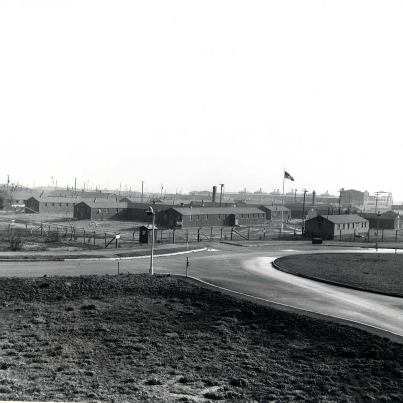








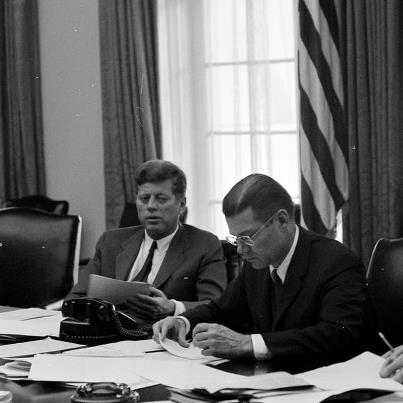
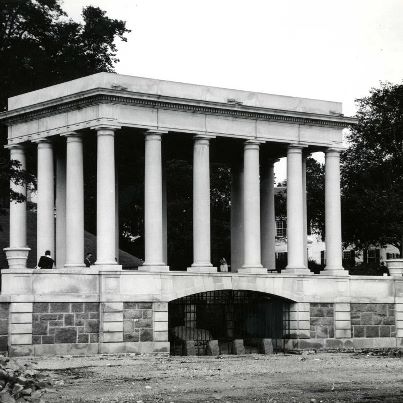

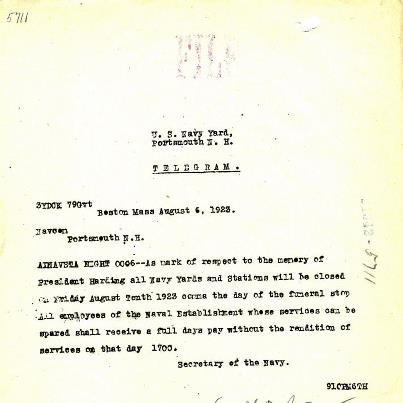
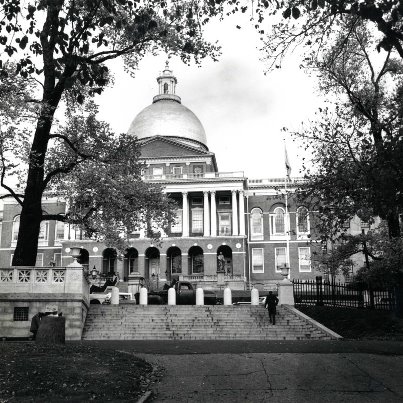
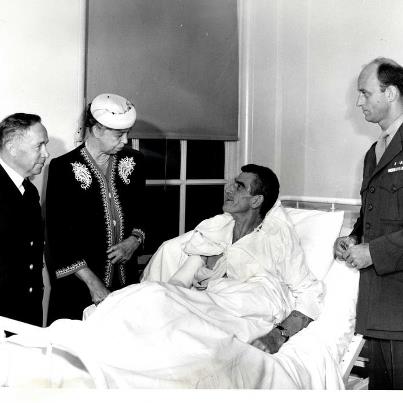




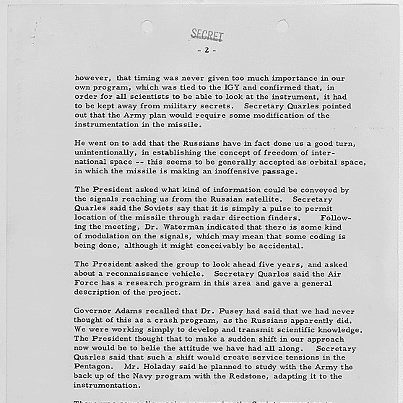



![Photo: On October 4, 1927, sculpting began on the face of Mount Rushmore in the Black Hills National Forest in South Dakota. These pictures are from the collection of the National Archives and show some of the sculpting in progress.
[South Dakota Projects, 1917-1949]: Washington completed, Jefferson in progress, 09/1935 ARC Identifier 5604020 Item from Record Group 30: Records of the Bureau of Public Roads, 1892 - 1972](https://cybercemetery.unt.edu/archive/oilspill/20121018081420im_/https://sphotos-a.xx.fbcdn.net/hphotos-ash3/c98.0.403.403/p403x403/541323_477985568900884_1871030450_n.jpg)
![Photo: On October 4, 1927, sculpting began on the face of Mount Rushmore in the Black Hills National Forest in South Dakota. These pictures are from the collection of the National Archives and show some of the sculpting in progress.
[South Dakota Projects, 1917-1949]: Mount Rushmore National Monument, 05/1939 ARC Identifier 5604046 Item from Record Group 30: Records of the Bureau of Public Roads, 1892 - 1972](https://cybercemetery.unt.edu/archive/oilspill/20121018081420im_/https://sphotos-a.xx.fbcdn.net/hphotos-prn1/c98.0.403.403/p403x403/58734_477985588900882_576703084_n.jpg)
